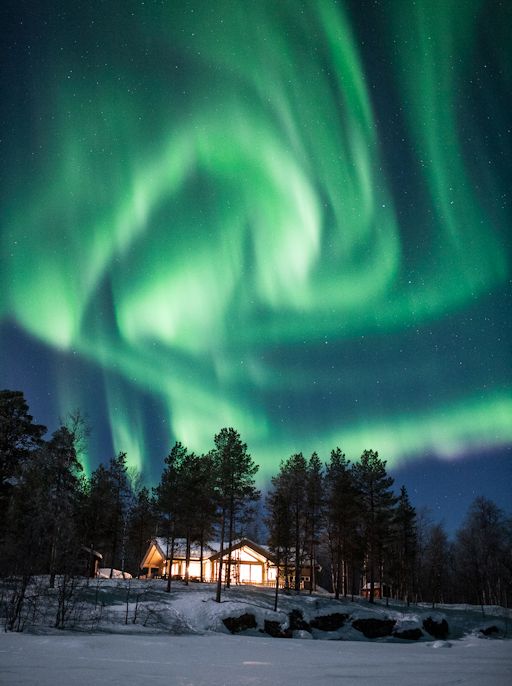CHANCE OF STORMS: NOAA forecasters estimate a 35% chance of polar geomagnetic storms on Jan. 17th when a minor CME is expected to hit Earth's magnetic field. High-latitude sky watchers should be alert for moonlit auroras. Aurora alerts: text, voice.
AURORA, BOOM! On Jan. 11th, Bjørn Hugo Hansen of Øverbygd, Norway, observed an explosive display of auroras--with sound effects. "The temperature was -27 C, and I was standing on the ice by our cabin. In the distance I could hear cracking sounds from the ice, a strange sound like a mix of whale bubbles hitting the ice and a small earthquake. This happens often. I believe it is stronger tonight, though, because of a big drop in temperature. Faint auroras were dancing quietly overhead when I spoke to myself -- 'Come on Aurora – give me all you got.' And BOOM! The sky exploded behind me." This is what he saw:
"Lady Aurora twisted around the sky, she threw her bridal veil all around," continues Hansen. "I was in ecstasy … and as if that was not enough, the ice under me made a large DRUN! I had never heard the sound of the ice crack this close before, almost right under me. It was an enormous sound. A thin crack 5mm wide rushed across the lake. Then it became quiet and Aurora disappeared. AMAZING!"
A story like that makes you wish you were in Norway. Browse the gallery for more stories from the ice:

Solar wind
speed: 351.6 km/sec
density: 2.4 protons/cm3
explanation | more data
Updated: Today at 1927 UT
X-ray Solar Flares
6-hr max: C8 1608 UT Jan17
24-hr: C8 1608 UT Jan17
explanation | more data
Updated: Today at: 1900 UT
![]()
Daily Sun: 17 Jan 14
None of the sunspots on the Earthside of the sun poses a threat for strong flares. Solar activity is low. Credit: SDO/HMI
![]()
Sunspot number: 77
What is the sunspot number?
Updated 17 Jan 2014
Spotless Days
Current Stretch: 0 days
2014 total: 0 days (0%)
2013 total: 0 days (0%)
2012 total: 0 days (0%)
2011 total: 2 days (<1%)
2010 total: 51 days (14%)
2009 total: 260 days (71%)
Update 17 Jan 2014
The Radio Sun
10.7 cm flux: 121 sfu
explanation | more data
Updated 17 Jan 2014
![]()
Current Auroral Oval:
Switch to: Europe, USA, New Zealand, Antarctica
Credit: NOAA/POES
![]()
Planetary K-index
Now: Kp= 1 quiet
24-hr max: Kp= 1 quiet
explanation | more data
Interplanetary Mag. Field
Btotal: 3.2 nT
Bz: 0.7 nT south
explanation | more data
Updated: Today at 1927 UT
![]()
Coronal Holes: 17 Jan 14
Solar wind flowing from the indicated coronal hole could reach Earth on Jan. 22.. Credit: SDO/AIA. ![]()





